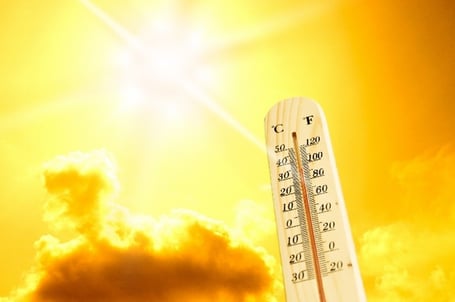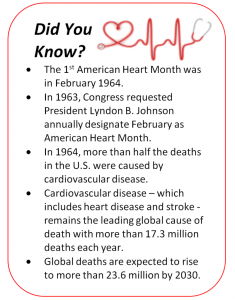Globally, extreme temperature events are increasing in frequency, duration and magnitude. Between 2000 and 2016, the number of people exposed to heat waves increased by around 125 million. In 2015 alone, 175 million additional people were exposed to heat waves compared to average years. 
In the United States, extreme heat ranks as the leading weather-related cause of death. In June 2021, a “heat dome” sat for weeks over western states of the U.S., and temperatures soared 20 °C higher than average in some places. Across the region, more than 1,000 people died from the heatwave. At the peak, more than 1,000 people a day in Oregon and Washington visited the emergency department for heat exhaustion and heat stroke, compared with nine people in 2019.
What’s Going On?
Human activities causing greenhouse gas emissions (GHG), especially the burning of fossil fuels, have resulted in about 2°F (1.1°C) warming since 1850-1900, and Earth is projected to further warm 2.7°F (1.5°C) in the next two decades. This additional warming will increase the frequency, intensity, and duration of heatwaves, bring more intense rainfall and associated flooding, further melt glaciers and ice sheets, continue to cause sea level rise and associated coastal erosion and flooding in low-lying areas, and other concerning changes – all with implications for health, healthcare delivery, and equity.
Heat’s Impact on the Body
The human body responds to heat stress in two primary ways: redistributing blood flow towards the skin (vasodilation) to improve heat transfer from muscles to skin and subsequently to the environment, and secreting sweat onto the skin, which subsequently evaporates and removes body heat.
The redistribution and increased blood flow to the skin, due to cutaneous vasodilation, increases cardiac demand while decreasing the heart's filling pressure. These responses require the heart to pump harder and faster, increasing the local (coronary tissue) oxygen demand. For people with pre-existing heart conditions, this response can lead to a mismatch between a high cardiac oxygen demand and a compromised cardiac oxygen delivery.
A sustained mismatch can lead to cardiac ischaemia, infarction, and ultimately, cardiovascular collapse. The elevated cardiovascular strain from heat stress is a primary health concern during heat extremes as more older adults die from cardiovascular events than nearly all other heat-related causes of death combined.
Humid heat is especially punishing. Several cities in Pakistan have already witnessed temperatures and humidity levels higher than the human body can survive. Extreme humid heat has more than doubled in frequency since 1979.
Many commonly prescribed medications, such as general anticholinergics, antidepressants, and opioids, and illegal narcotics such as cocaine, can compromise physiological heat loss responses as well. A reduced behavioral capacity to respond and adapt to extreme heat – e.g., bed confinement, living alone or lacking the ability to care for oneself -- also elevates the risk of heat-related illness or injury.
Working Conditions
Excessive heat during work creates occupational health risks. It restricts a worker’s physical functions and capabilities, work capacity and productivity. Temperatures above 24–26°C are associated with reduced labor productivity. At 33–34°C, a worker operating at moderate work intensity loses 50 per cent of his or her work capacity. Exposure to excessive heat levels can lead to heat stroke, sometimes with a fatal outcome.
Workers in all sectors are affected, but certain occupations are especially risky because they involve more physical effort and/or take place outdoors. Such jobs are typically found in agriculture, natural resource management, construction, refuse collection, emergency repair work, transport, tourism and sports. Industrial workers in indoor settings are also at risk if temperature levels inside factories and workshops are not regulated. At high heat levels, performing even basic office and desk tasks becomes difficult as mental fatigue sets in.
Several countries have developed – or are developing -- evidence-based, mandatory workplace heat stress rules. Examples include:
- China’s Administrative Measures on Heatstroke Prevention requires employers to provide protective measures to outdoor and indoor workers.
- Thailand’s indoor and outdoor occupational heat standard uses the wet bulb globe temperatures (WBGT) – a measure of heat stress in direct sunlight -- to estimate heat stress in the workplace.
- In South Africa, employers must conduct annual medical monitoring for heat; ensure workers are acclimatized; inform workers of the need to regularly drink water; provide heatstroke prevention training; and provide prompt first-aid in the event of a heat stroke.
- Germany and Spain have set indoor temperature limits for workplaces. In Spain, sedentary indoor offices must be kept at 27°C/80.6°F (and 25°C/77°F for light work settings). Germany’s Technical Rule for Workplaces: Room Temperature requires that most indoor temperatures should not exceed 26°C/78.8°F.
- Across the Middle East, midday work bans on outdoor labor are instituted during the summer months.
The United States lacks a federal heat standard, but in September 2021, the Biden Administration launched a rulemaking process to develop such a standard.
City Dwelling
In a warming world, an accumulation of heat in urban areas has become problematic. Urban spaces are more built-up and support less vegetation than the countryside, so the air-cooling effects of water evaporation and transpiration by plants are reduced. Rainwater is quickly funneled off, frequently underground, and is lost as a cooling agent. In addition, people in a city cook, heat or air-condition their homes, further increasing surface temperature. What’s more, heat is absorbed by urban building materials, such as asphalt and concrete.
In the absence of interventions, heat islands will only grow. By 2050, urban surface area in the United States is expected to expand by one-third. At the same time, the global population is projected to grow to 9.6 billion, with two-thirds living in urban areas, compared with just over half today
To mitigate the effect of urban heat islands, some cities are planting trees and building parks, and many have focused attention on rooftops — vast areas of unused space that absorb heat from the sun. In 2009, Toronto became the first city in North America to adopt a green-roof policy. It requires new buildings above a certain size to be topped with plants in the hope that they will retain storm water and keep temperatures down. A French law approved in March calls for the rooftops of new buildings in commercial zones to be partially covered in plants or solar panels.
Chicago has become a leader in the issue, hoping to prevent the kind of mass deaths seen during the city's five-day heatwave in 1995, when 700 people died. Since then, it has added cool roofs, green roofs and street plantings — and transformed black-top playgrounds into grass fields.
Where Do We Go from Here?
From the health perspective, warming is already dangerous. Midstream treatments include health protections, or adaptation, that target those most at risk. At the patient-level, interventions include identifying and minimizing a patient’s vulnerability to changing weather patterns. At the population-level, fostering increased partnerships between the medical and public health communities is essential.
The ultimate intervention is the reduction of greenhouse gas emissions. Health professionals can help by advocating for swift policy changes. As trusted messengers, they are powerful educators of the health benefits of action on climate change for patients, trainees, peers and the public.



Share Article